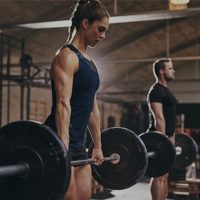To be successful as an athlete there are specific habits that need to be in place. Hall of fame powerlifter Brad Gillingham is here to give you the scoop on five habits every athlete should use.
A couple of years ago I posted a blog regarding Five Habits for Powerlifting Success. I feel it is important to revisit this information that is invaluable for powerlifters and athletes that are looking to improve strength through weight training.
Mastery of Technique
Learn how to execute your lifts correctly. Do not sacrifice form in order to lift more weight.
It is important todevelop a thorough understanding of the biomechanics of the lift in order to determine the components of proper technique.2 Every individual will have different physical characteristics.
It is not always feasible for every athlete to copy the technique of a world champion. Arm length, leg length, torso length, height and weight are characteristics that are going to influence the leverage the lifter can put on the bar. Therefore, every lifter is going to use a slightly different technique to acquire the most efficient movement. However, the main technical aspects of performing the lift should always be followed.
The greatest powerlifter in the world, Ed Coan, frequently speaks about always executing proper technique in all your repetitions, including your warm-ups. In Ed’s case, he has squatted over 1,000 lbs. many times, but he begins using proper technique with every repetition, even when warming up with just the bar.
Poor form can lead to inefficient lifting technique and injuries. Inefficient lifting technique and injuries will hinder strength development. Training with proper efficient technique is key to increasing strength. Furthermore, making your attempts is key to success on the lifting platform.
At the 2021 IPF World Championships the gold medal winners in the men’s and women’s classes were successful in 112/144 attempts (78%). Whereas, 4th place finishers were only successful in 89/144 attempts (62%).1
Mastery of Technique is Essential.
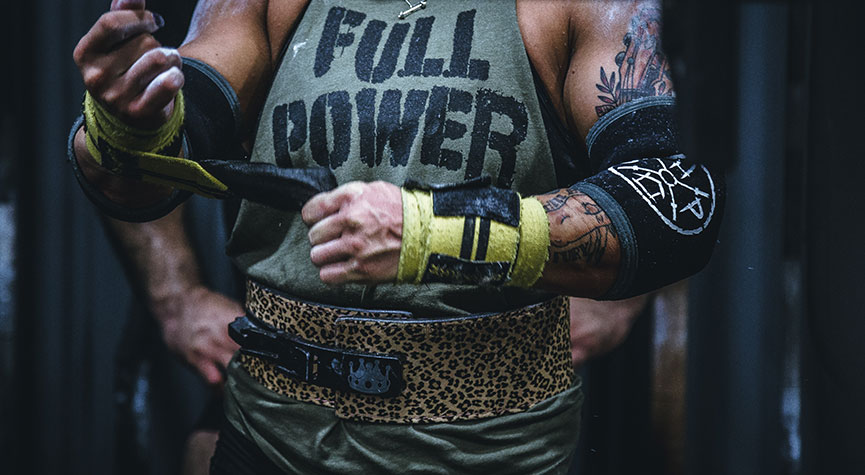
Mental Intensity in Powerlifting
You have to prepare yourself mentally to lift. Gross motor activities like powerlifting require a high level of arousal.3 Once you master your technique it is time to crank it up!
Let your intensity build up during your warmup, and be ready to go when working sets are loaded or when you step on the competition platform. I always try to create an intense environment in the gym; both as an athlete and a coach. Psyching-up is the key to success on the powerlifting platform.
According to Marty Gallagher, 6-Time IPF World Champion Kirk Karwoski’s world-renown psyche-up may have contributed as much as 5% to his strength on the platform.4 I have watched Kirk’s legendary squats many times. I believe Coach Gallagher is right in his assessment of the value of the Karwoski psych-up.
When it’s time to train, focus on training. Always remember to leave the cell phone in the locker-room, and save long conversations until afterwards.
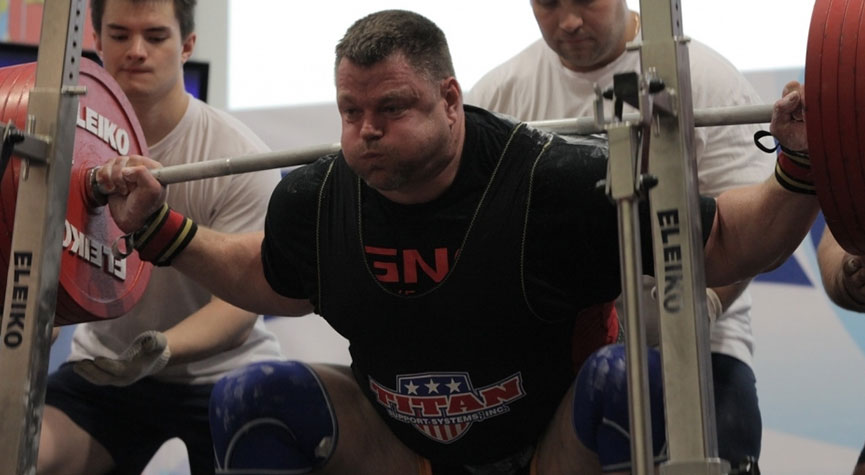
Goal Setting for Powerlifting
Set long term goals and establish a plan to achieve these goals. National Championships and World Records do not come over night.
I was 31 years old before I won my first National title. I was 45 years old before I set my first Open Class World Record. These accomplishments took years and years of setting goals and implementing effective training programs to achieve those goals.
The best way to build long-term strength is by collectively achieving small goals over time. You need to have a long-term vision of where you want to be 5-10-20 years from now. You cannot accomplish your ultimate goals overnight.
During my climb to my peak strength years, I tried to make small personal records (PR) in each lift every meet. This reinforced to me that I was making progress and my training was solid. I never tried to better my PR by a large margin.
Constantly missing lifts gets in the way of progress. Set reasonable goals and make sure your training is set up for you to achieve those goals. In strength training these goals are accomplished by well thought out training programs that use progressive resistance to achieve the desired increase in strength and power.
Small steps and goals need to be attained each training session in order to achieve your desired strength outcome.
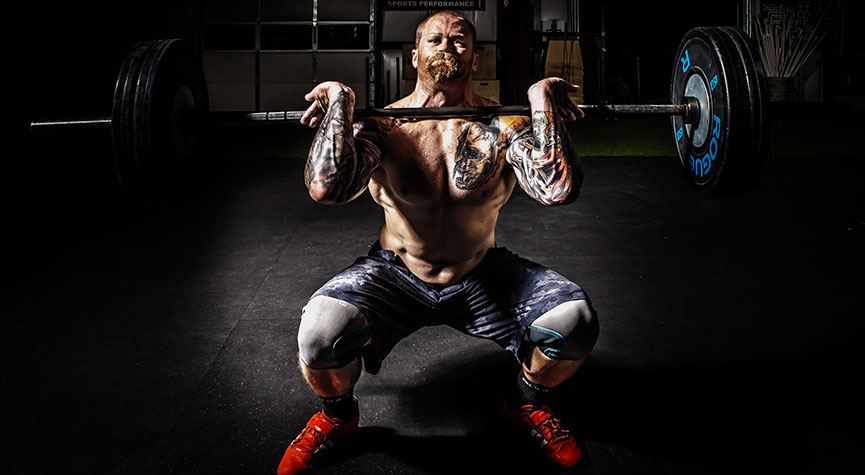
Identifying Weak Areas and Strengthening Sticking Points
Performance plateaus can occur in the squat, bench, and the deadlift. This may occur from lack of strength gains, or poor performance in competition.
It may be necessary to practice and refine your technique or make changes in your training program to further address sticking points in the movement. The sticking point refers to a region in the upward range of motion (ROM) of the lift when the vertical bar velocity begins to slow down or stop. The ability to complete a lift becomes more difficult at the sticking point.5 In order to move beyond failed attempts, it is necessary to figure out what part of the movement needs to get stronger.
Sticking points can affect the completion of:
- a bench press at lockout
- a squat by stalling out after coming out of the hole
- a deadlift at a point near passing of the knees. It may be important to add additional assistance exercises to strengthen your sticking points.
This can be accomplished by:
- isolating weak parts of the movement
- supramaximal partial range of motion training
- isometric training
- speed work
- variable resistance training with bands or chains.5
Concentrate on improving your weak points.
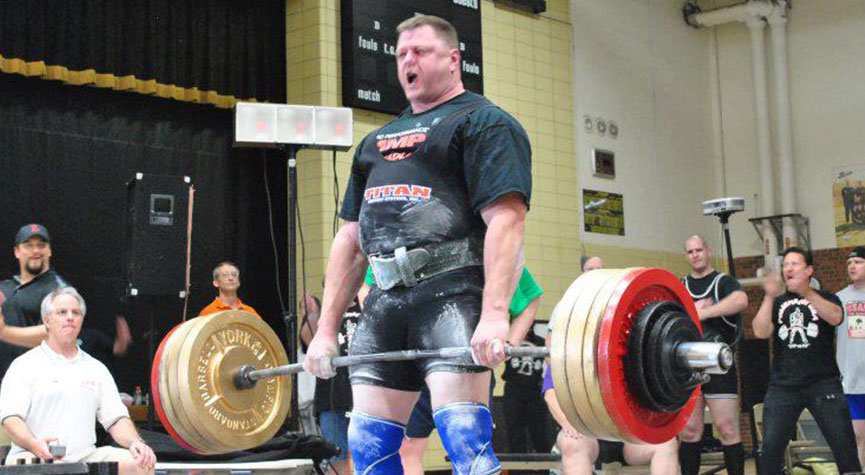
Start Competing
Too many prospective powerlifters want to be at World Championship strength before they ever start competing. This never works.
Developing high levels of strength and having success in powerlifting takes time and experience. Lifting in a meet is entirely different from lifting in the gym.
It is important to start competing to get comfortable with lifting in a competition format. I suggest competing more frequently when you first start out. As you become more seasoned then you may want to limit yourself to 2-3 big contests a year.
Competition is one of the best ways you can improve as an athlete. Competition provides motivation to improve and allows an athlete to set training goals.6 If you don’t compete, you won’t have a benchmark to determine if your training methods are working.
How will you stay motivated to master your technique, increase mental intensity, set goals, and work your weak areas if you don’t compete? Start competing!
Looking for more training tips, check out these training videos from Brad
Want to get the most out of your workouts? Try myHMB.
MyHMB has been clinically proven to improve recovery, build muscle and strength, and enhance aerobic capacity. Learn more.
References
- IPF. Results and statistics world open powerlifting championships 2021. IPF – International Powerlifting Federation.
- Coker CA. Motor Learning and Control for Practitioners. New York: Routledge, Taylor & Francis Group; 2018.
- Cox RH. Sport Psychology: Concepts and Applications. 7th ed. NY: McGraw-Hill Higher Education; 2011.
- Gallagher M. How the elite get psyched up for a big lift: Raw with Marty Gallagher. Iron Company Fitness Equipment and Rubber Gym Flooring.. Published April 13, 2021. Accessed November 18, 2021.
- Kompf J, Arandjelović O. Understanding and overcoming the sticking point in resistance exercise. Sports Medicine. 2016;46(6):751-762. doi:10.1007/s40279-015-0460-2
- Kyllmann C. Improve through competition: How challenging yourself can enhance your performance. BOXROX. Published July 6, 2021.




